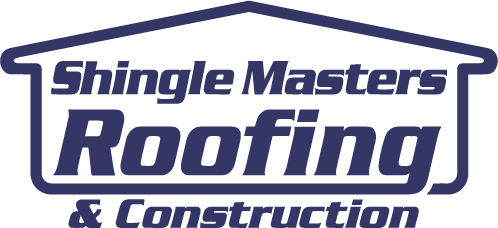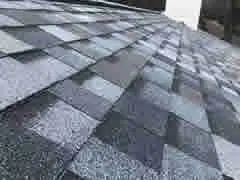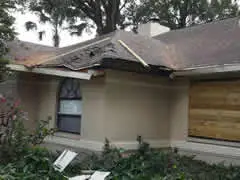Tampa Bay Hurricane-Ready Roofing Materials and Tips
Hurricane-Ready Roofing—Preparation, Materials, and Maintenance
Estimated reading time: ~9 minutes
Key takeaways
- A hurricane-ready roof is a complete system of components (sealed roof deck, enhanced fastening, secondary water barrier, impact-rated materials) working together to resist high winds and water intrusion.
- Wind mitigation matters: Upgrades like sealed decks and specific nailing patterns can be verified via a Uniform Mitigation Verification Inspection and may earn substantial insurance credits.
- Preparation reduces damage: Clean gutters, trim overhanging branches, and secure yard items before storms.
- Materials & ratings: Choose high wind ratings (e.g., ASTM D7158 Class H) and consider impact ratings (UL 2218 Class 4).
- Post-storm: Prioritize safety, document damage thoroughly, then contact a licensed roofer and your insurer before repairs.
Table of contents
- What You Need to Know About Hurricane-Ready Roofing
- How a Hurricane-Ready Roof is Installed
- Cost, Timelines & Warranties
- Local Tampa Bay Roofing Considerations
- Common Mistakes & When NOT to Do This
- Insurance & Storm Damage Claims
- Verify Your Insurance Coverage Checklist
- Why Choose ShingleMasters Roofing?
- Glossary of Roofing Terms
- Get Your Free Hurricane-Ready Roofing Inspection
- Sources
- Frequently Asked Questions
What You Need to Know About Hurricane-Ready Roofing
A hurricane-ready roof system integrates specific components and installation methods mandated by the Florida Building Code to protect your home. It focuses on securing the roof deck to the frame, sealing it against water, and using shingles and reinforcements that resist wind uplift and projectile impacts.
This preparation is not just about avoiding leaks; it’s about preserving the structural integrity of your entire home during a major storm. Use this pre-season checklist to prepare:
Homeowner Pre-Storm Checklist:
- Schedule a Professional Inspection: Get a qualified roofer to check for loose shingles, damaged flashing, and failing seals before hurricane season starts.
- Clean Gutters and Drains: Ensure water can flow freely off your roof. Clogged gutters can lead to water backing up under the shingles, causing serious water damage.
- Trim Overhanging Trees: Remove dead or overhanging branches that could break off in high winds and become damaging projectiles.
- Inspect and Secure Flashing: Check the metal strips around chimneys, vents, and skylights. Reseal any gaps to prevent wind-driven rain from entering.
- Review Your Insurance Policy: Understand your hurricane deductible, coverage limits, and the process for filing a claim. Take “before” photos of your roof’s current condition.
- Secure Yard Items: Store or tie down outdoor furniture, grills, and tools that could become airborne and damage your roof.
- Gather Emergency Supplies: Prepare materials for temporary repairs, like tarps and plywood, in case your roof sustains damage.
- Confirm Your Wind Mitigation Report: If you have one, ensure it’s up-to-date. If you’ve made upgrades, a new inspection could unlock insurance discounts.
How a Hurricane-Ready Roof is Installed
Installing a roof built to withstand Tampa’s weather is a precise, multi-step process that emphasizes strength and water resistance. It goes far beyond simply nailing down shingles, requiring adherence to strict building codes and manufacturer specifications.
Here’s a step-by-step look at how a professional installation unfolds:
- Comprehensive Inspection & Planning: A ShingleMasters project manager inspects your current roof structure, attic, and ventilation. We measure precisely and identify any underlying deck damage that needs repair, ensuring the foundation for your new roof is solid.
- Estimate and Material Selection: We provide a detailed, transparent estimate outlining every step. You’ll choose from a range of high-performance materials, selecting the right wind-rated shingles, underlayment, and ventilation options for your home and budget.
- Tear-Off and Deck Preparation: The old roofing materials are carefully removed and disposed of. Our crew inspects the wooden roof deck for rot or damage, replacing sheets as needed. We then re-nail the deck to the trusses according to the enhanced fastening patterns required by the Florida Building Code to strengthen it against wind uplift.
- Installing Water Barriers: This is a critical step. A self-adhering “peel-and-stick” membrane is applied over the entire roof deck. This sealed roof deck acts as a crucial secondary water barrier, protecting your home even if some shingles are lost.
- Roofing System Installation: We install the complete system in the correct order: drip edge, starter strips designed for high-wind zones, the primary shingles with a 6-nail pattern for maximum hold, and specially reinforced hip and ridge shingles. All vents and flashing are expertly sealed.
- Thorough Cleanup & Final Inspection: Our crews use magnets and rakes to collect fallen debris and nails, leaving your property pristine. A final inspection ensures every detail meets our quality standards and local code requirements.
- Warranty & Registration: We register your manufacturer’s warranty on your behalf, providing you with documentation confirming both material and workmanship guarantees for your peace of mind.
Tools & Materials: Nail guns, specialized roofing hatchets, pry bars, safety harnesses, dump trailers, magnetic sweeps, impact-rated shingles, synthetic underlayment, ice & water shield, starter strips, hip & ridge caps, ridge vents, lead pipe boots.
Personnel: A dedicated project manager, a crew of 4–8 certified installers, and a cleanup team.
Duration: A typical residential roof replacement takes 1–3 days, depending on the size, complexity, and weather conditions.
Cost, Timelines & Warranties
The cost of a new roof depends heavily on the materials you choose, the size and complexity of your roof, and the specific upgrades required for wind mitigation. While a higher initial investment often translates to better long-term protection and potential insurance savings.
Factors that influence cost include:
- Roof Size and Slope: Larger or steeper roofs require more materials and labor.
- Material Choice: Impact-rated architectural shingles or metal roofing cost more than basic 3-tab shingles but offer superior protection.
- Deck Condition: Replacing rotten or damaged decking adds to the overall cost.
- Code Upgrades: Bringing a roof up to current Florida Building Code standards may require additional work, such as re-nailing the deck.
Warranties Explained
It’s vital to understand the two types of warranties:
- Material Warranty: Provided by the manufacturer, this covers defects in the roofing materials themselves. A “lifetime” warranty typically means for as long as you, the original owner, own the home. It is often prorated after an initial period.
- Workmanship Warranty: Provided by the roofing contractor (ShingleMasters), this covers errors in installation. This is crucial, as improper installation is a leading cause of roof failure.
| Material | Wind Rating (ASTM D7158) | Impact Class (UL 2218) | Typical Warranty | Typical Cost Range (per sq. ft. installed) |
|---|---|---|---|---|
| Architectural Shingles | Class H (150 mph) | Class 1–3 (Class 4 optional) | 30-Year to Lifetime | $5.50 – $9.50 |
| Impact-Resistant Shingles | Class H (150 mph) | Class 4 | Lifetime | $6.50 – $11.00 |
| Standing Seam Metal | 140+ mph | N/A (very durable) | 40-Year to Lifetime | $9.00 – $18.00+ |
*Cost ranges are estimates for planning purposes only and can vary significantly. Data compiled from industry sources and manufacturer documentation. Verify all details with your contractor.*
Local Tampa Bay Roofing Considerations
Homeowners in Hillsborough, Pinellas, and surrounding Tampa Bay counties must comply with the Florida Building Code (FBC). While not in the official High-Velocity Hurricane Zone (HVHZ) like Miami-Dade, our region is designated as a wind-borne debris region, which triggers stringent roofing requirements.
The key FBC requirement for our area is the mandatory sealed roof deck, also known as a secondary water barrier. This involves applying a self-adhering polymer-modified bitumen sheet over the entire roof deck before the shingles are installed. If high winds blow shingles off, this layer remains as a waterproof barrier, preventing catastrophic water intrusion.
Other local requirements include:
- Enhanced Nailing Patterns: Both the roof deck to the trusses and the shingles to the deck must be fastened with specific nail types, sizes, and spacing to resist wind uplift.
- Rated Materials: Shingles must have a minimum wind rating (e.g., ASTM D7158) appropriate for our wind zone.
- Starter and Ridge Strips: Special adhesive strips must be used at the eaves (starter strips) and reinforced shingles on hips and ridges to prevent wind from getting a foothold.
- Permits and Inspections: A building permit is required for any re-roofing project in Tampa Bay. The work must be inspected at key stages by a municipal building inspector to ensure code compliance.
To verify the specific requirements for your property, you can contact your local municipal building department:
- City of Tampa Construction Services
- Hillsborough County Building Services
- Pinellas County Building Services
Common Mistakes & When NOT to Do This
While a strong roof is a homeowner’s best defense, there are situations and mistakes that can compromise its integrity or your safety. Attempting a DIY roof installation in a hurricane zone is extremely dangerous and almost certain to violate building codes.
Avoid these common pitfalls:
- Do not install new shingles over old ones. “Roof over” adds excessive weight and can hide serious problems with the underlying roof deck. It is also prohibited by Florida Building Code for most applications.
- Do not hire an unlicensed or uninsured contractor. This exposes you to massive financial and legal risks. Verify credentials with the Florida Department of Business and Professional Regulation (DBPR).
- Do not delay repairs to a known leak. Small leaks can quickly lead to widespread wood rot, mold growth, and compromised structural integrity, making your home more vulnerable in a storm.
- Do not walk on a storm-damaged roof. The structure could be weakened and unsafe. Wait for a professional assessment.
- Do not use a pressure washer to clean your roof. The high pressure can strip away protective granules on asphalt shingles, drastically shortening lifespan and voiding manufacturer warranties.
Insurance & Storm Damage Claims
Navigating the insurance claims process after a storm can be stressful. Following a clear, systematic approach can help ensure a smoother experience and a fair outcome. The most important step is to mitigate further damage safely and document everything thoroughly.
Typical path for a storm damage claim:
- Safety First & Documentation: Once it’s safe to go outside, take detailed photos and videos of the damage to your roof and property from the ground. Note the date and time.
- Temporary Mitigation: If there are active leaks causing interior damage, take reasonable steps to prevent it from worsening. This could involve placing a tarp over the damaged area. Many insurance policies cover the cost of emergency mitigation.
- Contact Your Insurance Carrier: Report the damage and open a claim as soon as possible. Your insurer will provide a claim number and assign an adjuster.
- Schedule a Professional Roof Inspection: Contact a trusted roofer like ShingleMasters. We can meet with the insurance adjuster on-site to ensure all damage is identified and accurately assessed.
- Adjuster’s Visit and Scope of Work: The insurance adjuster will inspect the damage and create a “scope of work,” which is a report detailing the covered repairs and an initial estimate.
- Review and Supplements: Your contractor will review the adjuster’s scope. If any damage was missed or costs were underestimated, they will file a “supplement” to request additional funds.
- Repairs and First Payment: Once the scope is agreed upon, your insurer will typically release the first payment, known as the Actual Cash Value (ACV), less your deductible. You can then schedule the repairs.
- Final Invoice and Depreciation Release: After the work is complete, your contractor sends the final invoice to the insurer. The company then releases the remaining funds held back as “recoverable depreciation,” bringing the total payout to the full Replacement Cost Value (RCV).
Verify Your Insurance Coverage Checklist
Before a storm hits, review your policy to understand these key points:
- Policy Type: Is it Replacement Cost Value (RCV) or Actual Cash Value (ACV)? RCV is strongly preferred.
- Deductibles: Note your standard deductible and your separate, often higher, “Hurricane” or “Named Storm” deductible.
- Coverage Limits: Check the maximum amount your policy will pay for dwelling coverage (Coverage A).
- Wind Damage Coverage: Confirm that wind and hail damage are explicitly covered.
- Exclusions: Look for any specific exclusions related to roof age or condition.
- Code Upgrade Coverage: Does your policy include “Ordinance or Law” coverage? This pays the extra cost to bring your roof up to current building codes during repair.
- Loss of Use: Understand your coverage for temporary living expenses if your home is uninhabitable during repairs.
Disclaimer: This information is for educational purposes only and is not legal or insurance advice. Always verify coverage details directly with your insurance carrier.
Why Choose ShingleMasters Roofing?
Protecting your home with hurricane-ready roofing requires more than just high-quality materials—it demands expert installation by a team that understands Tampa Bay’s unique challenges. At ShingleMasters, we build roofing systems designed for resilience, safety, and long-term peace of mind.
Our commitment is to provide a seamless, transparent, and professional experience from the first inspection to the final nail. We live and work here, so we know what it takes to protect a home from a Florida hurricane. Our process is built on a foundation of trust and quality.
The ShingleMasters Difference:
- Certified Installers: We are a GAF Master Elite® Contractor, a certification held by only 2% of roofing contractors in North America. This means our teams are factory-trained to install roofing systems to the highest manufacturer standards.
- Superior Warranty Options: Thanks to our certification, we can offer the GAF Silver Pledge™ and Golden Pledge® Limited Warranties, which include robust coverage for both materials and workmanship.
- Meticulous Cleanup: We treat your property with respect. Our commitment to a “nail-free” cleanup means we use magnetic rollers and perform a thorough visual inspection to leave your yard safe for your family and pets.
- Wind Mitigation Expertise: We build every roof to meet or exceed Florida’s stringent wind mitigation codes, helping you secure your home and potentially lower your insurance premiums. Explore our roof replacement guide for more details.
- Emergency Response: When a storm hits, our Hurricane Support team is ready. We offer emergency tarping services and rapid-response inspections to help you secure your property and start the recovery process quickly. See our storm damage repair options for more information.
- Flexible Financing: We offer a range of accessible financing options to ensure you can afford the protection you need without delay.
Glossary of Roofing Terms
- Class 4 Impact Rating: The highest impact resistance rating for roofing materials, determined by the UL 2218 test, where a 2-inch steel ball is dropped from 20 feet without causing cracks or fractures.
- Ice & Water Shield: A common term for a self-adhering, waterproof membrane used to protect vulnerable areas of a roof from leaks caused by wind-driven rain or ice dams (more common in northern climates). In Florida, a similar product is used to create the secondary water barrier.
- O&P (Overhead and Profit): A line item in an insurance claim estimate that covers the general contractor’s business operating costs and profit margin. It is a standard and legitimate part of complex restoration projects.
- Ridge Vent: An exhaust vent installed along the peak (ridge) of a roof that allows warm, moist air to escape from the attic, crucial for proper ventilation and energy efficiency.
- Underlayment: The layer of material between the roof deck (the wood sheeting) and the primary shingles. In Florida, this is typically the self-adhering secondary water barrier.
Get Your Free Hurricane-Ready Roofing Inspection
Don’t wait for a storm watch to wonder if your roof is ready. The ShingleMasters Hurricane Support team is here to help you prepare with a comprehensive, no-obligation inspection and a clear, fair estimate. Protect your home and family with a roofing system built for Tampa Bay weather.
If you only do 3 things…
- Schedule a free inspection to identify and address vulnerabilities now.
- Clean your gutters and trim nearby trees to reduce immediate risks.
- Locate your insurance policy and review your hurricane deductible today.
Claim your free storm damage assessment or pre-season inspection by contacting our team. We’re ready to help.
Sources
- GAF Golden Pledge® Limited Warranty — GAF
- Florida Building Code, 7th Edition (2020) – Residential — International Code Council
- Wind Mitigation — Florida Department of Financial Services
- FORTIFIED Roof™ Standards — Insurance Institute for Business & Home Safety (IBHS)
- ASTM E1592-01 — Standard Test Method for Field Determination of Uplift Resistance of G-90 Steel and Aluminum Roof Panels by Uniform Static Air Pressure Difference
- UL 2218 — Standard for Impact Resistance of Prepared Roof Covering Materials
Frequently Asked Questions
What makes a roof “hurricane-proof”?
There is no such thing as a truly “hurricane-proof” roof, but a hurricane-resistant or hurricane-ready roof is a system designed to withstand specific high-wind conditions and prevent water intrusion. It includes features like a sealed deck, enhanced nailing, high-wind-rated shingles, and reinforced edges as required by local building codes.
How much can I save on insurance with wind mitigation?
Savings vary significantly by your home’s location, age, insurer, and the specific features you have. However, according to the Florida Department of Financial Services, homeowners can save hundreds or even thousands of dollars per year with certified wind mitigation features. Verify potential discounts directly with your insurance carrier.
Is a Class 4 impact rating worth it in Tampa?
A Class 4 rating (UL 2218) signifies the highest level of impact resistance, primarily against hail. While Tampa is better known for hurricanes, hail storms do occur. For homeowners seeking the maximum level of protection and durability, especially those considering a higher-end architectural shingle, the upgrade to Class 4 can be a worthwhile investment for its added resilience and potential for further insurance discounts.
Can I just repair my roof instead of replacing it?
Minor, isolated damage on a relatively new roof can often be repaired. However, if the roof is over 15–20 years old, has widespread damage, or has previously been repaired multiple times, a full replacement is usually the more cost-effective and safer long-term solution. The “25% Rule” in the Florida Building Code may also require a full replacement if more than 25% of the roof is damaged.



